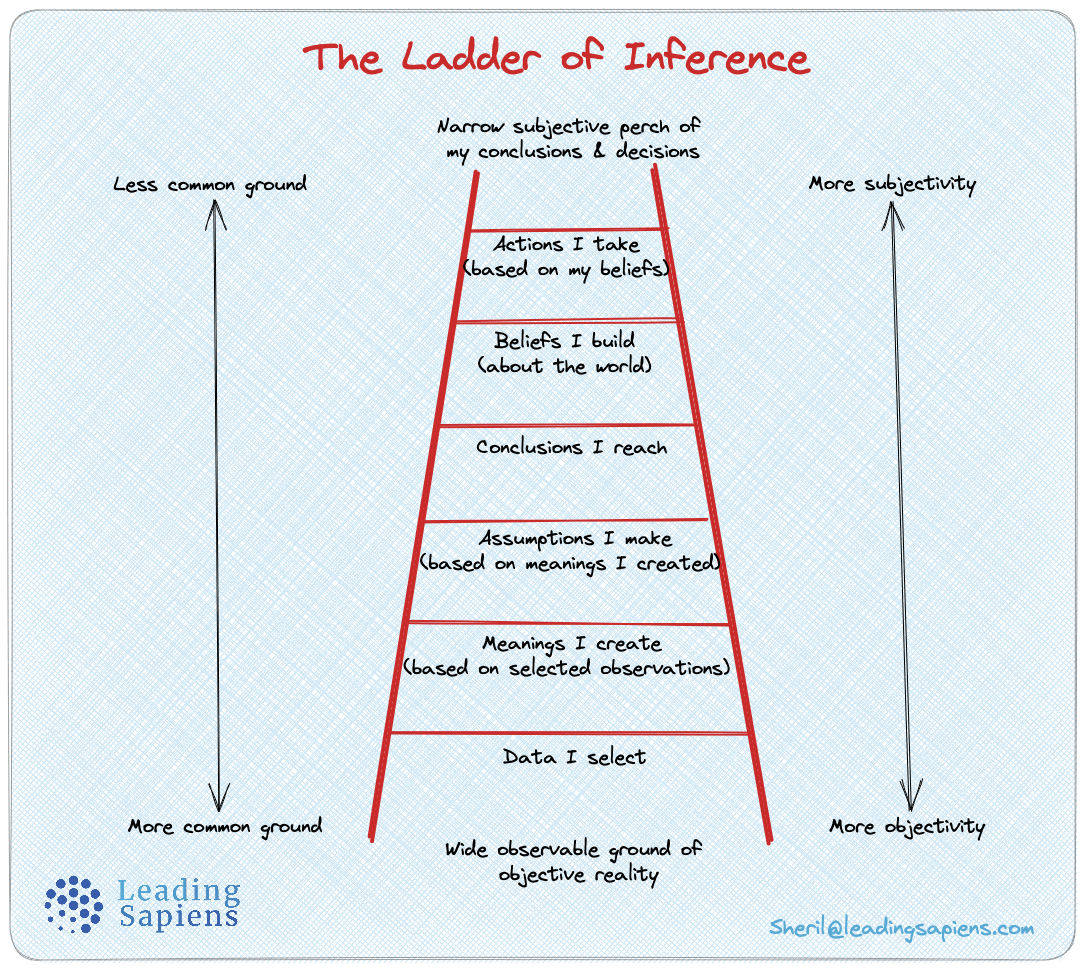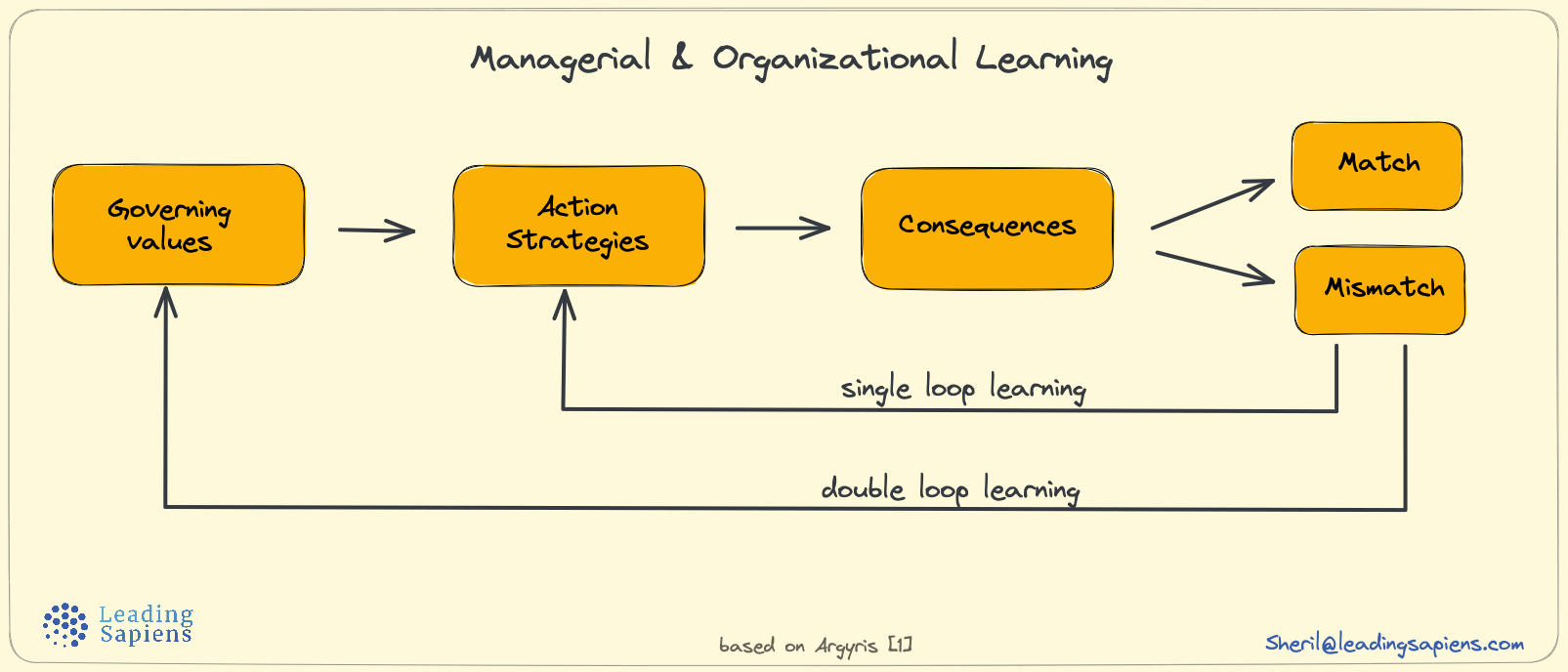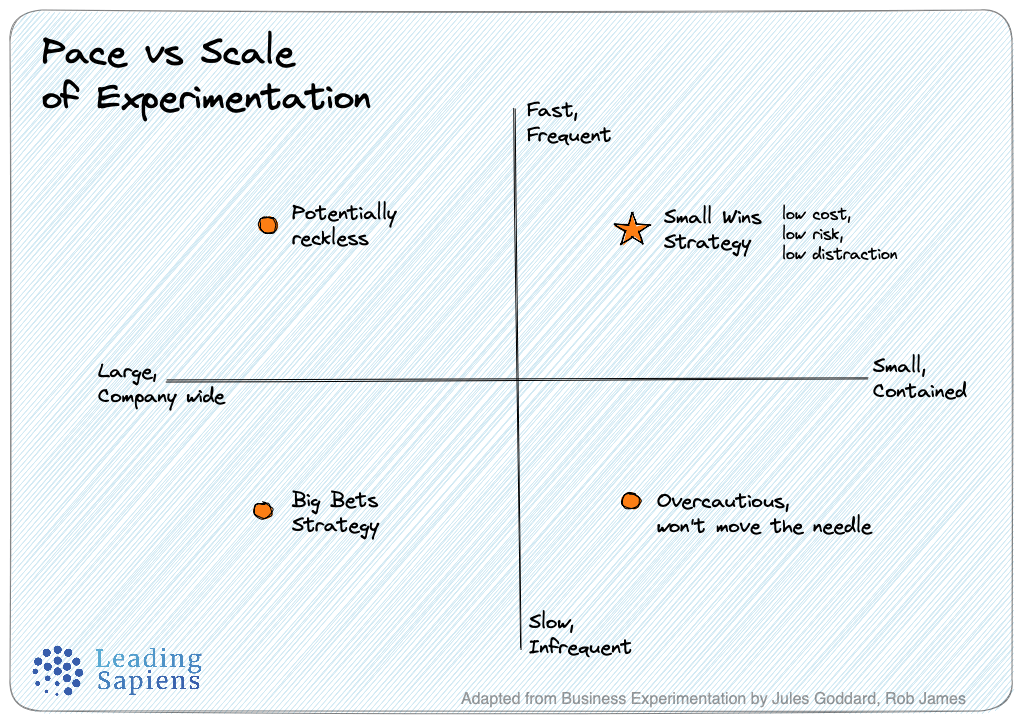Almost everyone has the term “problem-solving” featured prominently in their resumes. Conversely, barely anyone uses the term “problem-setting”. Except in complex domains like leadership, problem-setting is often more critical than problem-solving.
What is problem-setting, how is it different from good old problem-solving, and why is it critical to effective leadership?
What is problem-setting
MIT organizational learning pioneer Donald Schon, writing in his classic The Reflective Practitioner, defined problem-setting as follows:
In real-world practice, problems do not present themselves to the practitioners as givens. They must be constructed from the materials of problematic situations which are puzzling, troubling, and uncertain. In order to convert a problematic situation to a problem, a practitioner must do a certain kind of work. He must make sense of an uncertain situation that initially makes no sense.
...although problem setting is a necessary condition for technical problem solving, it is not itself a technical problem.
When we set the problem, we select what we will treat as the "things' of the situation, we set the boundaries of our attention to it, and we impose upon it a coherence which allows us to say what is wrong and in what directions the situation needs to be changed.
Problem setting is a process in which, interactively, we name the things to which we will attend and frame the context in which we will attend to them.
Schon’s passage gives several clues about what problem-setting is:
- Problems are not always obvious, or packaged that way
- We are actively constructing them, instead of the standard passive interpretation of problems being “out there”, and we the solvers tackling them
- It’s more critical when situations are “puzzling, troubling, and uncertain”, aka operating in complexity
- Problem-setting is an active, ongoing process of sense-making
- We are inclined towards a certain interpretation given our backgrounds and histories, but which also blinds us to other definitions
- It's a precursor to problem-solving, and not technical in nature
- We are actively choosing the parameters of a problem, whether we are aware of it or not
- How we name and frame parameters, influences what solutions we consider
Problem-setting is essentially the context and frame within which problem-solving happens. Not understanding this also means missing out on a key aspect of problems — the part where we actually have the most leverage and ability to take action.
Problem solving can be understood as a matter of means-ends deliberation. This is because the statement of a well-formed problem includes specification of the purposes to be achieved. But before a problem can be solved, it must be set.
Real life does not present us with well-defined problems such as those at the end of the chapters of a textbook. Rather, human beings confronted with complex, ambiguous, and puzzling circumstances must pose the problems they will endeavor to solve.
— Chris Argyris, Robert Putnam , Diana McLain Smith [9]
Problem-setting is generative in nature, that's distinct from the choosing and looking for answers involved in problem-solving. The process of finding answers happens within the reality that problem-setting generates.
It's about shifting attention to inputs, instead of focusing exclusively on means and outcomes.
An example of problem-setting
Consider the radically disparate approaches of the French and American efforts to build the Panama Canal — same situation, but different problem definitions:
The French…thought that construction of a canal in Panama would be a similar task to the one they faced in the Suez; namely, all they had to do was build a sea-level ditch and a few locks and that would be that. Not only were they wrong about that, they didn't figure out how to handle yellow fever. Twenty thousand deaths later, the project, its finances, and the French government were a shambles.
The Americans succeeded when they realized that a series of step-locks irrigated by the region's heavy rains would minimize the problem of landslides into the canal, a problem exacerbated by the French effort to build a sea-level canal through a mountain range covered by jungle soil.
The Americans also succeeded when they realized that mosquitoes carried yellow fever, and that the insects were unable to survive very long outside of dense jungle. By cutting back the jungle a few hundred yards the mosquitoes could be kept away from the people working on the project.
— John Bryson [11]
The problem with problem-solving
From the perspective of Technical Rationality, professional practice is a process of problem solving. Problems of choice or decision are solved through the selection, from available means, of the one best suited to established ends.
But within this emphasis on problem solving, we ignore problem setting, the process by which we define the decision to be made, the ends to be achieved, the means which may be chosen.
— Donald Schon [1]
The default problem-solving approach has inherent assumptions, which creates blindspots:
- Problems are assumed to be a given, and obvious, with the primary objective being “finding and looking” for solutions. All resources are focused on solution-finding rather than problem-defining. This focus also means we forget our role in creating and defining the problem.
- The perception of problems is static. This means the focus is more on the means to get there, and the removal of obstacles. Resources are assumed to be a key constraint. What’s forgotten is that given a different definition, the obstacles might be automatically eliminated.
- The key task is essentially selection and optimizing among the various options. Except, the options are themselves generated by a particular definition of the problem.
- Leads to a myopic focus on “problems” that might simply be symptoms, and in the process, missing the larger systemic issues that are actually causes.
- The tendency is to isolate solutions from problems, whereas in reality both are inter-dependent and influence each other’s evolution.
- It’s easy to forget that almost all “problems” are someone’s definition. This could be you, or some other stakeholder like a manager or a customer. We forget that often the problem definition is negotiable or changeable.
- The problem-solving mindset tends to simplify issues, but can have the opposite effect of complicating issues by directing resources at the wrong problems. This can be a handicap particularly when information is not clear or simply unavailable. In contrast, embracing complexity by focussing on problem-setting naturally leads to more understanding. That’s the difference between naive simplification, and profound simplification, aka wisdom.
Complex issues require complex thinking, but not at the level of solving problems, but at the level of formulating them.This is partly an issue about variety. As...W.R. Ashby observed in his ‘Law of Requisite Variety’, ‘only variety can absorb variety’.
Most management processes are about simplifying the external environment (thus reducing variety) so that it can be better understood and acted upon. ...But if there is too much simplification, especially at the early stages of the work, there is a significant danger that the eventual scenarios will likewise be too simple.
By skipping to problem solving instead of problem setting, important aspects of the overall environment will be overlooked which might otherwise lead the organization...to consider the decision in a completely different light, or even conclude that a different decision is required.
— Andre Curry [4]
There is nothing wrong with problem-solving in and of itself. The mistake is to rely on it exclusively, and not realizing that complex problems require a more complex approach.
The concepts of "wicked problems" and "messes" are classic situations where problem-setting is more critical than the simple notion of problem-solving.
Wicked problems vs hard problems
Just like the Panama canal, many challenges we face daily tend to be “wicked” problems that are fundamentally different from “hard” problems. What’s the difference? Jennifer Riel describes it this way:
Lots of problems are hard: differential calculus, for instance. Or determining the optimal production schedule for a new manufacturing plant. Or assigning a realistic value to stock options.
Hard problems are complex and take many steps from beginning to end, making it difficult to see your way clear to the solution from the outset. Hard problems face us at every turn, but fortunately business schools specialize in giving us the analytical tools that allow us to tackle and solve these problems.
So hard problems aren’t the problem. The real challenge that faces the CEO and the young manager alike is that not all problems are hard problems. In fact, many of them belong to an entirely different category: wicked problems.
Wicked problems aren’t merely harder or more complex than hard problems. They don’t just involve more factors or stakeholders. They don’t just take us longer to solve. Analytical thinking alone, no matter how skillfully applied, isn’t going to generate an answer to a wicked problem.
Wicked problems, first identified by mathematician and planner Horst Rittel in the 1960s, are messy, aggressive, and confounding…Churchman described wicked problems as “a class of social system problems which are ill-formulated, where the information is confusing, where there are many clients and decision makers with conflicting values, and where the ramifications in the whole system are thoroughly confusing.”
In other words, wicked problems are ill-defined and unique in their causes, character, and solution.
— Jennifer Riel [11]
How do you know if you have a wicked problem on your hand?
• The causes of the problem are not just complex but deeply ambiguous; you can’t tell why things are happening the way they are and what causes them to do so.
• The problem doesn’t fit neatly into any category you’ve encountered before; it looks and feels entirely unique, so the problem-solving approaches you’ve used in the past don’t seem to apply.
• Each attempt at devising a solution changes the understanding of the problem; merely attempting to come to a solution changes the problem and how you think about it.
• There is no clear stopping rule; it is difficult to tell when the problem is “solved” and what that solution may look like when you reach it.
...
With hard problems, your job is to look at the situation, identify a set of definite conditions, and calculate a solution. With wicked problems, the solution can no longer be the only or even the primary focus. Instead, dealing with wicked problems demands that attention be paid to understanding the nature of the problem itself. Problem understanding is central; the solution, secondary.
— Jennifer Riel [11]
Dissolving messes vs solving problems
Russell Ackoff’s analogy [5] of messes vs. problems is a useful one:
One of the most damaging misconceptions plaguing management is that problems are objects of direct experience. Not so. They are abstractions extracted from experience by analysis. Problems are related to experience as atoms are to tables. Tables are experienced, not atoms.
Managers are not confronted with separate problems but with situations that consist of complex systems of strongly interacting problems. I call such situations messes. Therefore, the behavior of a mess, and a mess is a system, depends at least as much on how its parts interact as on how they act independently of each other.
However, it is standard managerial practice to reduce messes to aggregations of problems: to prioritize and treat them separately, as self-contained entities. Managers do not generally know how to deal effectively with any system, let alone messes, taken as a whole.
Effective managers do not solve problems; they dissolve messes. Ineffective managers mismanage rather than manage messes.
Thus problems, and problem-solving, can be seen as part of an ever-evolving, problem-setting process, rather than an end in itself.
📚 HBR 100 Best Reads: You also get a curated spreadsheet of the best articles Harvard Business Review has ever published. Spans 70 years, comes complete with categories and short summaries.
Role of the manager and leader
As individual contributors, we are trained to focus on problem-solving. But as you move higher up the organization, the skillset of problem-setting starts becoming more critical, while problem-solving becomes secondary. Why so?
- Impact — Your teams, or team of teams, are already good at problem-solving. So what are you bringing to the table?
- Right problems — While in-depth knowledge of a domain helps in understanding what might be going on, even more important is the ability to leverage this knowledge to ensure teams are in fact working on the right problems.
- Setting context — In complex challenges, as opposed to well-defined technical problems, the solutions and pathways are numerous. What you choose to focus on, often influences downstream choices and actions of your team. This becomes ever more critical in an environment of limited resources and infinite options.
- Interpretation and framing — Most situations, where leadership is actually needed, are fuzzy by definition. Problem-solving happens within a given definition of a problem. Problem-setting is all about how you go about outlining that definition itself. This choice that you make, by selecting and framing, is a key aspect of effective leadership.
- Sense-making and sense-giving:
A leader at work is one who gives others a different sense of the meaning of that which they do by recreating it in a different form, a different “face”, in the same way that a pivotal painter or sculptor or poet gives those who follow him (or her) a different way of "seeing" — and therefore saying and doing and knowing in the world. A leader does not tell it "as it is"; he tells it as it might be, giving what 'is" thereby a different face.
...The leader is a sense-giver. The leader always embodies the possibilities of escape from what might otherwise appear to us to be incomprehensible, or from what might otherwise appear to us to be a chaotic, indifferent, or incorrigible world — one over which we have no ultimate control.
— Thayer [7]
Questions to consider
Here are some questions to regularly ask yourself:
- Your default approach — is it problem-solving or problem-setting? Which one are you more comfortable with?
- Where, and how, do you add the most value?
- Which features are you choosing to focus on? What are you NOT focusing on?
- Are there aspects you are unaware of? (you will need external help, because by definition these are invisible)
- What additional information, if you had access to, would change the definition of your problem?
How to get better at problem-setting
Given the importance of problem-setting, below are some ways to develop this ability:
(1) Focus on questions, as much as answers
Our default approach is to jump to solve the problem, without questioning the problem itself.
The Westerner and the Japanese man mean something different when they talk of "making a decision." In the West, all the emphasis is on the answer to the question. Indeed, our books on decision making try to develop systematic approaches to giving an answer.
To the Japanese, however, the important element in decision makingis definingthe question. The important and crucial steps are to decide whether there is a need for a decision and what the decision is about. And it is in that step that the Japanese aim at attaining consensus. Indeed, it is this step that, to the Japanese, is the essence of decision.
The answer to the question (what the West considers the decision) follows from its definition. During the process that precedes the decision, no mention is made of what the answer might be. . . . Thus the whole process is focused on finding out what the decision is really about, not what the decision should be.
— Peter Drucker [7]
(2) Understand the role of naming and framing
Language (metaphors and stories) plays a key role in how situations gets interpreted and the resulting actions. This is often tacit, influenced by our backgrounds. Neither can they be avoided because it's ontological — how human beings are.
Depending on our disciplinary backgrounds, organizational roles, past histories, interests, and political/economic perspectives, we frame problematic situations in different ways.
A nutritionist, for example, may convert a vague worry about malnourishment among children in developing countries into the problem of selecting an optimal diet. But agronomists may frame the problem in terms of food production; epidemiologists may frame it in terms of diseases that increase the demand for nutrients or prevent their absorption; demographers tend to see it in terms of a rate of population growth that has outstripped agricultural activity; engineers, in terms of inadequate food storage and distribution; economists, in terms of insufficient purchasing power or the inequitable distribution of land or wealth.
...Those who hold conflicting frames pay attention to different facts and make different sense of the facts they notice. It is not by technical problem solving that we convert problematic situations to well-formed problems; rather, it is through naming and framing that technical problem solving becomes possible.
— Donald Schon [2]
(3) Use the ladder of inference
A useful tool for understanding how we jump to conclusions, and how our stories influence decisions and actions is Chris Argyris' ladder of inference:

(4) Understand the role of context
Problem-setting forms the context within which your teams operate:

(5) Understand how framing influences actions
The framework of double-loop learning shows where the step of problem-setting fits into the overall picture:

Another way to understand problem-setting is the power of framing, which also happens to be a key step in creating psychological safety in your teams.
(6) Deeper levels of reality
The systems thinking iceberg model shows that top level events can actually be distractions. Leaders have to learn to delve deeper and understand problems from a systemic perspective.

(7) Understand the mechanism of small wins
Choosing and focusing on particular aspects, amongst a plethora of confusing choices, is one of the key mechanisms at work in engineering a small wins strategy:

Sources
- The Reflective Practitioner by Donald Schon
- Educating the Reflective Practitioner by Donald Schon
- Schon, Donald A.. “Metaphor and Thought: Generative metaphor: A perspective on problem-setting in social policy.” (1993).
- Scenarios for Success: Turning Insights into Action Edited by Bill Sharpe and Kees Van der Heijden
- Ackoff, R.L. (1994), Systems thinking and thinking systems. Syst. Dyn. Rev., 10: 175-188. https://doi.org/10.1002/sdr.4260100206
- Small Wins by Karl Weick
- Sensemaking in Organizations by Karl Weick
- Conversational Realities by John Shotter
- Action Science by Chris Argyris, Robert Putnam, Diana McLain Smith
- John Bryson(1988)Strategic planning: Big wins and small wins,Public Money & Management,8:3,11-15,DOI: 10.1080/09540968809387483
- The Design of Business by Roger Martin


